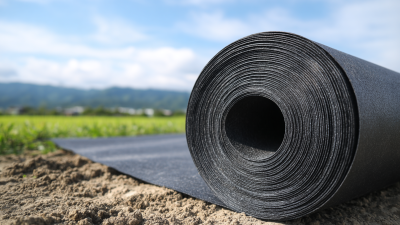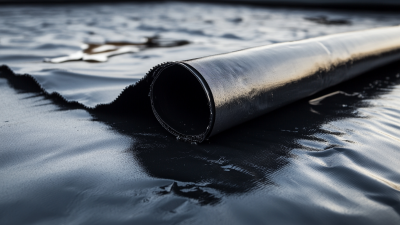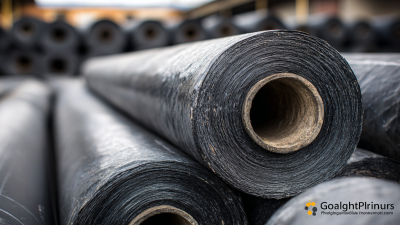Inquiry
Form loading...
- Phone
- E-mail
In recent years, the rising awareness of environmental protection and sustainable practices has significantly influenced the materials utilized in various environmental projects. Among these, HDPE geomembrane has emerged as a critical component due to its exceptional durability, chemical resistance, and impermeability. According to a report by MarketsandMarkets, the global geomembrane market is expected to grow from USD 2.57 billion in 2020 to USD 4.54 billion by 2025, reflecting a compound annual growth rate (CAGR) of 11.6%. This growth can be attributed largely to the increasing demand for HDPE geomembrane in applications such as waste management, mining, and water containment.
HDPE geomembrane not only meets stringent environmental regulations but also offers significant cost savings and operational efficiencies for projects. Its performance characteristics make it an ideal choice for lining landfills, containment of hazardous materials, and agricultural applications. The National Institute of Health and Environment (RIVM) has reported that projects utilizing HDPE geomembrane can reduce leachate production by up to 90%, thus minimizing the risk of environmental contamination. As we delve into the top 10 benefits of using HDPE geomembrane in environmental projects, it becomes evident that this versatile material is poised to play a pivotal role in advancing environmental sustainability and resource conservation.
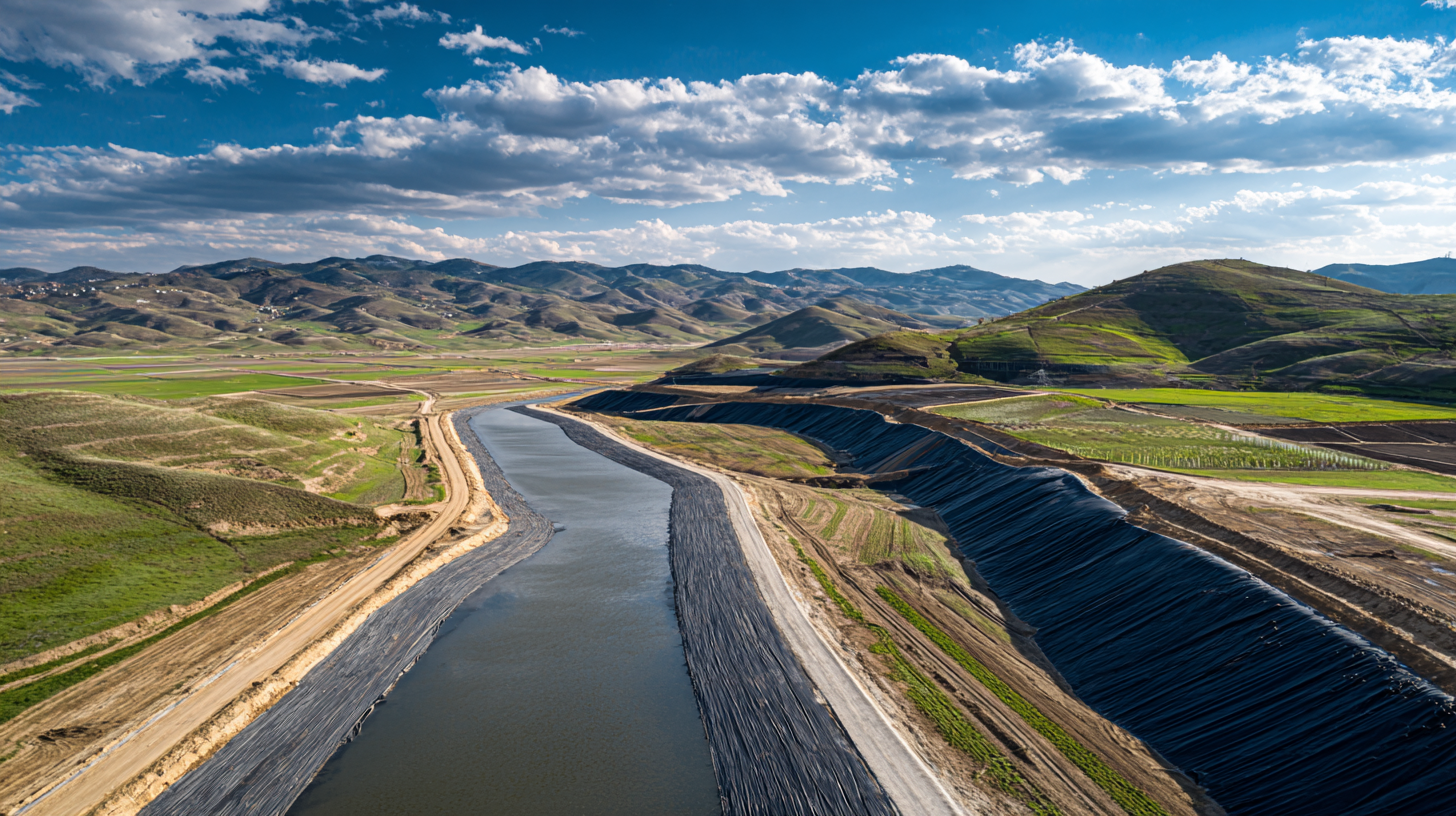
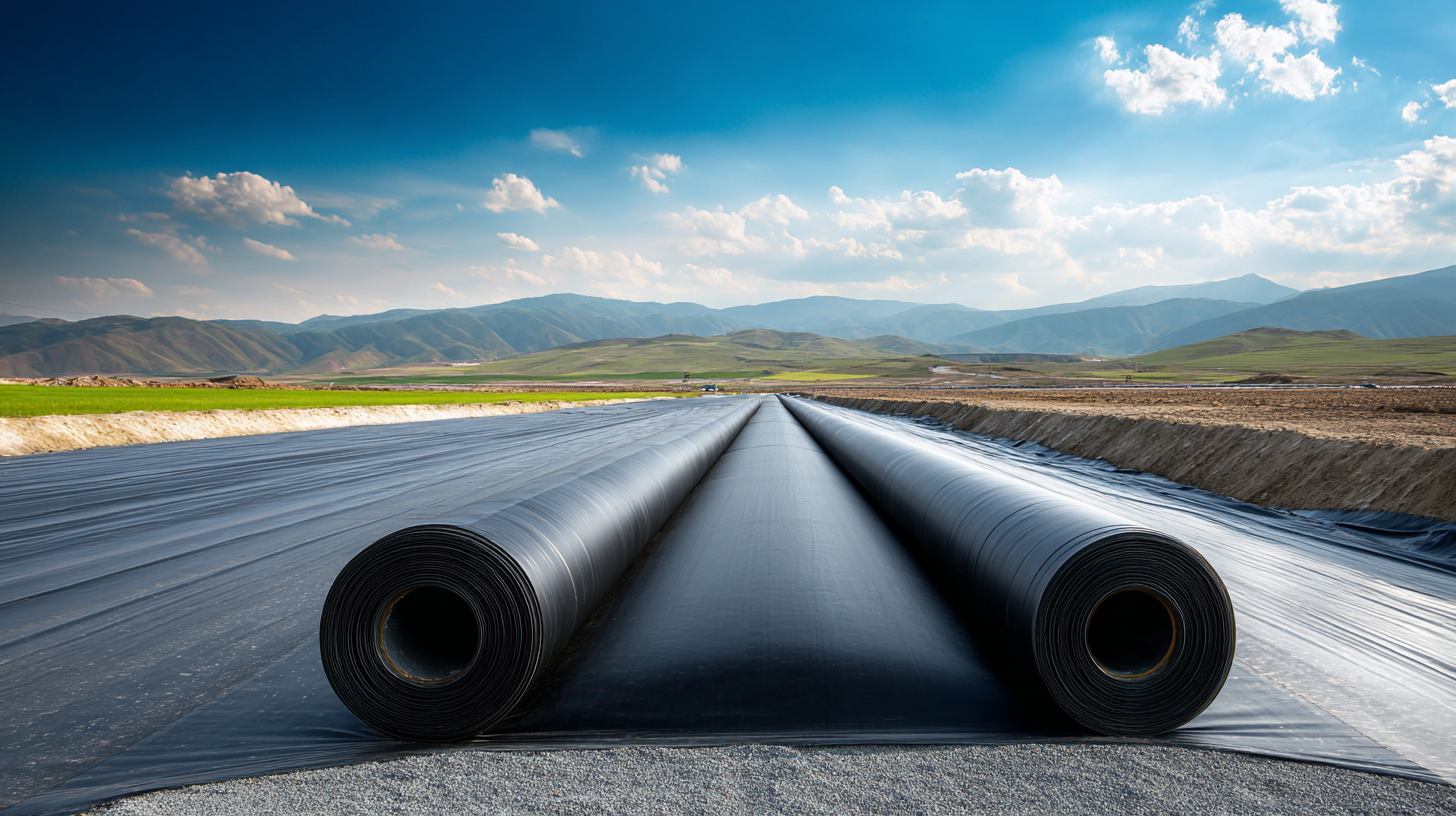 High-Density Polyethylene (HDPE) geomembranes have become increasingly essential in environmental projects, primarily due to their robust physical and chemical properties. Research indicates that HDPE geomembranes exhibit excellent impermeability, with a permeability coefficient as low as 1 x 10-10 cm/sec. This makes them particularly effective in applications like landfill liners, where controlling leachate migration is crucial for protecting soil and groundwater from contamination.
High-Density Polyethylene (HDPE) geomembranes have become increasingly essential in environmental projects, primarily due to their robust physical and chemical properties. Research indicates that HDPE geomembranes exhibit excellent impermeability, with a permeability coefficient as low as 1 x 10-10 cm/sec. This makes them particularly effective in applications like landfill liners, where controlling leachate migration is crucial for protecting soil and groundwater from contamination.
In addition to their impermeability, HDPE geomembranes are highly resistant to a variety of chemicals, including acids, bases, and solvents, which enhances their longevity in harsh environments. According to a report from the International Geosynthetics Society, HDPE geomembranes can maintain their structural integrity and performance for over 30 years under proper installation practices, thus providing a cost-effective solution for long-term environmental protection. Furthermore, their UV resistance allows them to perform effectively even in outdoor applications, making them a versatile choice for a range of projects, from waste management to water containment systems.
HDPE geomembranes are increasingly recognized for their superior durability, especially when utilized in harsh environmental conditions. These high-density polyethylene membranes are engineered to withstand extreme temperatures, UV radiation, and aggressive chemicals, making them an ideal choice for various environmental projects such as landfill liners and containment solutions. Their robust nature ensures a long service life, significantly reducing the need for frequent replacements and maintenance, which can be both costly and labor-intensive.
Tips for ensuring optimal performance of HDPE geomembranes include proper installation and regular inspection. When installing, ensure that the seams are securely sealed to prevent leaks, as this integrity is critical for maintaining containment. Additionally, regularly inspecting the surface for signs of wear or damage can help in addressing potential issues before they escalate.
Another key aspect to consider is the compatibility of HDPE geomembranes with surrounding materials. Make sure to assess factors such as soil types, water chemistry, and environmental conditions that may affect the membrane’s performance. Proper selection and integration into the project can lead to enhanced longevity and efficiency in environmental applications.
| Benefit | Description | Durability Rating | Typical Lifespan (Years) |
|---|---|---|---|
| Chemical Resistance | Resistant to a wide range of chemicals, making it suitable for landfill applications. | 5/5 | 30+ |
| UV Resistance | Designed to withstand prolonged exposure to sunlight without degrading. | 4/5 | 30+ |
| Puncture Resistance | Offers high resistance to punctures from rocks or sharp objects. | 5/5 | 30+ |
| Flexibility | Retains flexibility in low temperatures, ensuring effective sealing. | 4/5 | 30+ |
| Cost-Effectiveness | Provides a long-term solution with reduced replacement costs. | 4/5 | 30+ |
| Environmental Impact | Minimizes adverse effects on the environment by preventing leakage. | 5/5 | 30+ |
| Installation Ease | Lightweight and easy to install, reducing labor costs. | 4/5 | 30+ |
| Heat Resistance | Can withstand extreme temperatures, ideal for various climates. | 5/5 | 30+ |
| Longevity | Designed for long-term performance in harsh environments. | 5/5 | 30+ |
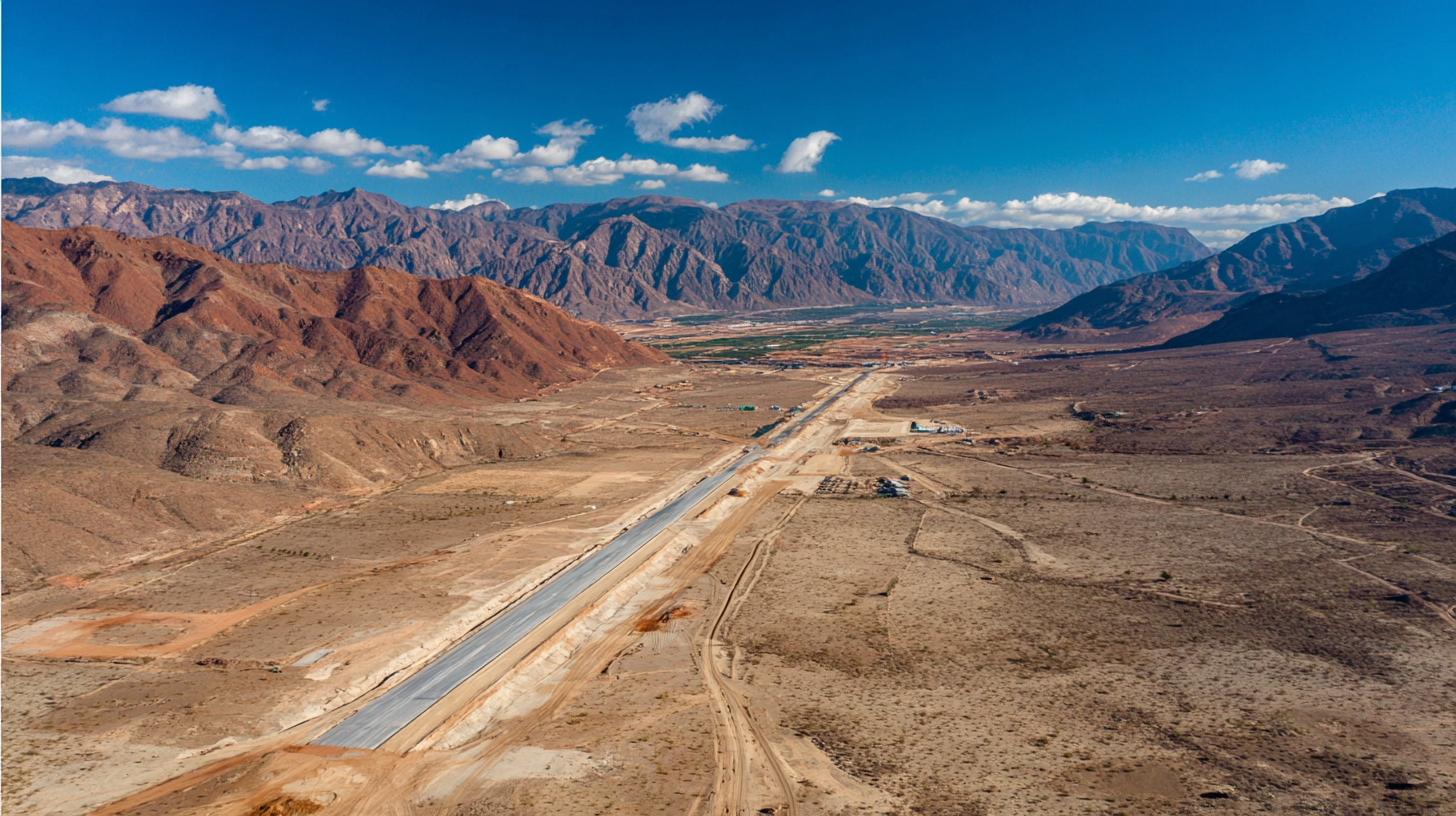 HDPE geomembranes are increasingly recognized for their superior chemical resistance, making them an ideal choice in environmental projects. With the ability to withstand aggressive waste contaminants, these membranes play a crucial role in preventing leakage and contamination from hazardous materials. This feature stems from the molecular structure of HDPE, which provides an impermeable barrier that protects surrounding environments from potentially harmful substances.
HDPE geomembranes are increasingly recognized for their superior chemical resistance, making them an ideal choice in environmental projects. With the ability to withstand aggressive waste contaminants, these membranes play a crucial role in preventing leakage and contamination from hazardous materials. This feature stems from the molecular structure of HDPE, which provides an impermeable barrier that protects surrounding environments from potentially harmful substances.
In applications such as landfill liners and containment systems, HDPE geomembranes act as a first line of defense against chemical penetration. They are resistant to a wide range of solvents, acids, and bases, ensuring that even the most aggressive waste materials do not compromise the integrity of the containment system. This resistance not only enhances the safety of environmental projects but also reduces the likelihood of costly remediation efforts that could arise from breaches or failures in less resilient materials. Thus, the use of HDPE geomembranes significantly contributes to the long-term sustainability and effectiveness of waste management solutions.
High-Density Polyethylene (HDPE) geomembranes have become increasingly popular in environmental projects due to their cost-effectiveness and long-term financial benefits. One of the primary advantages of using HDPE geomembrane is its durability. Its resistance to chemicals, UV radiation, and extreme weather conditions ensures that the lining will last for decades without requiring costly replacements or repairs. This longevity directly translates to significant savings, as project managers face fewer expenditures related to maintenance and operational disruptions.
In addition to durability, HDPE geomembranes are efficient in reducing environmental liabilities and potential cleanup costs. By effectively preventing the infiltration of contaminants into soil and groundwater, they minimize the risk of environmental damage and the associated costs of remediation efforts. Moreover, installation processes tend to be faster and more straightforward than with other materials, which can further reduce labor costs and expedite project timelines. These characteristics demonstrate that investing in HDPE geomembranes can yield substantial long-term financial savings while contributing to environmental protection and sustainability initiatives.
The use of HDPE geomembranes in environmental projects significantly contributes to regulatory adherence and sustainable practices. With stringent environmental regulations in place, projects must employ materials that minimize the risk of contamination and pollution. HDPE geomembranes provide a robust barrier against leachates and other hazardous materials, ensuring compliance with environmental standards. Their durability and chemical resistance make them ideal for lining landfills, containment ponds, and various waste management facilities. By utilizing HDPE geomembranes, organizations can confidently meet regulatory requirements while protecting soil and water resources from potential pollutants.
Moreover, the sustainability aspect of HDPE geomembranes cannot be overstated. These materials are recyclable and have a long lifespan, reducing the need for frequent replacements and minimizing waste. Additionally, their ability to reduce groundwater contamination and manage stormwater runoff aligns with sustainable development goals. The installation of HDPE geomembranes promotes responsible land use and environmental stewardship, making them an essential component of modern environmental projects. As industries continue to focus on sustainability, HDPE geomembranes stand out as a beneficial solution that supports both compliance and eco-friendly practices.
The use of HDPE geomembrane in environmental projects offers numerous advantages that enhance project efficiency and environmental protection. Its enhanced durability ensures longevity even in harsh conditions, making it an ideal choice for various applications. The superior chemical resistance of HDPE geomembrane provides effective protection against aggressive waste contaminants, crucial for maintaining the integrity of containment systems.
Moreover, HDPE geomembrane is cost-effective, offering long-term financial savings while supporting compliance with environmental regulations. Its ease of installation streamlines project timelines, allowing for faster deployment of flexible solutions. Overall, the incorporation of HDPE geomembrane significantly contributes to sustainable practices and the successful execution of environmental projects.
